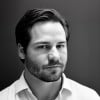Introduction
Phased array ultrasonic testing (PAUT) was originally developed as a complementary application to collect and visualize data that conventional ultrasonic testing (UT) could not. After its introduction in the medical field in the 1960s, it took a few decades before the technology was viable in industrial settings such as oil and gas, power generation, and manufacturing. Since the late 2010s, phased array technology has developed rapidly with modern systems capable of accurately identifying and quantifying millimeter defects. It is expected that phased array technology will continue to advance rapidly over the next decade, with new and innovative developments being made in automation, hardware and software technology, artificial intelligence (AI), and machine learning (ML).
A Brief History
In 1801, Thomas Young introduced the concept of phasing. He performed an experiment on wave interference utilizing two light sources and found that light waves reinforced when they crossed in-phase, and they canceled out when they crossed out of phase, as depicted in Figure 1 [1]. Because of this initial finding, phasing is understood as a method for controlling time wavefronts from multiple sources to bend, steer, and focus the energy.

The history of phased array technology and its applications is well documented and summarized in Figure 2 [1]. The first phased array systems were developed in the 1960s and were mainly used in medical applications until the 1980s. Early conventional UT used single or dual-element probes limited to gathering data in a fixed area of focus. Phased array was introduced into ultrasonics as a method for overcoming those limitations by applying time delays to multiple elements in order to focus and steer the sound beam at designated areas within the material. When phased array was introduced in industrial settings in the 1980s, it allowed users to collect information and visualize data in applications conventional UT could not adequately accomplish, including weld inspection, bond testing, thickness mapping, and in-service crack detection [1].


















Comments and Discussion
There are no comments yet.
Add a Comment
Please log in or register to participate in comments and discussions.